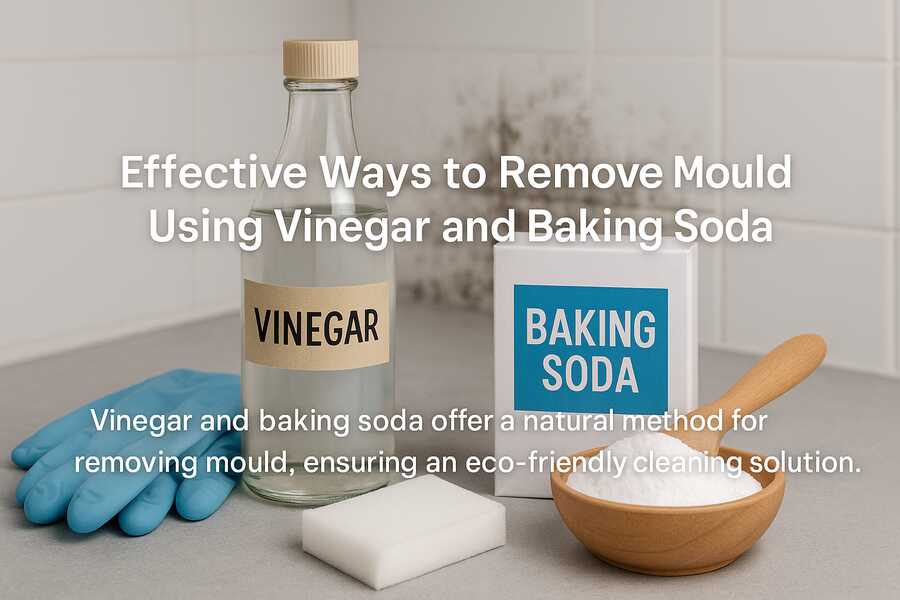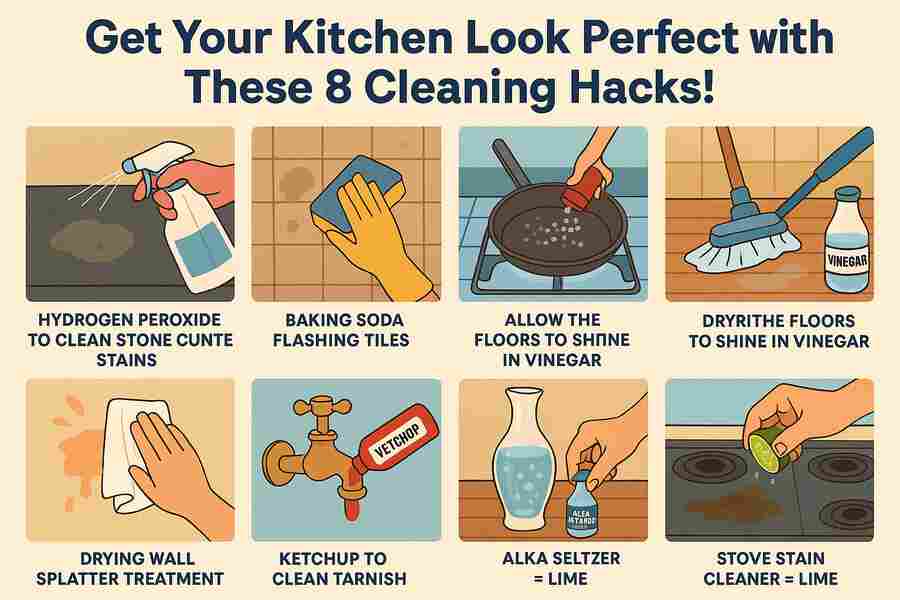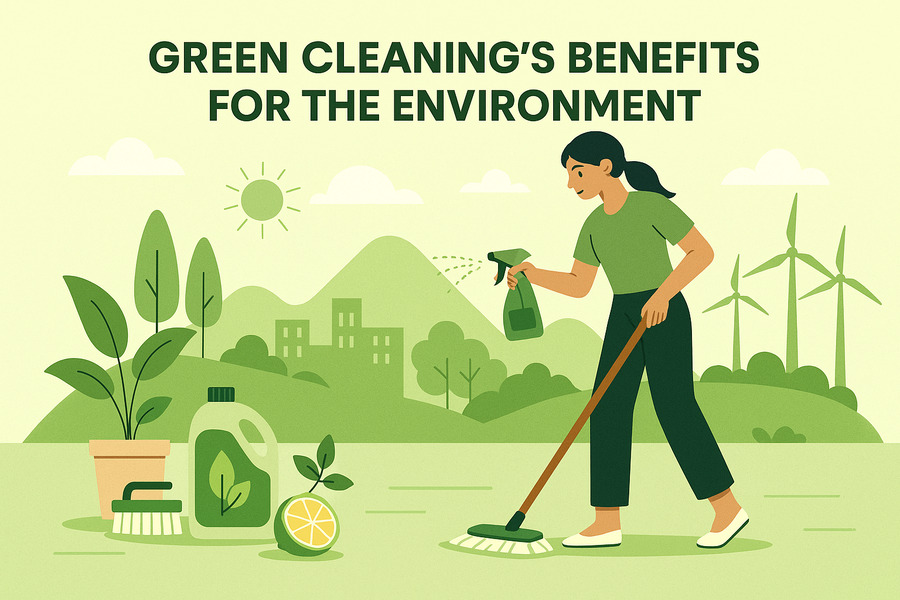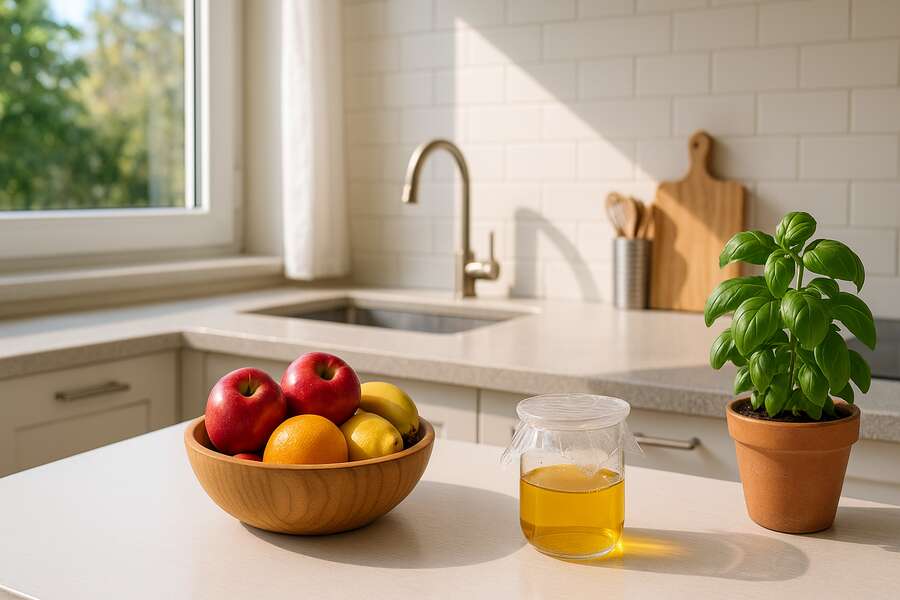Effective Ways to Remove Mould Using Vinegar and Baking Soda

Vinegar and Baking Soda: Natural Mould Removal Guide
Frustrated with the growth of unsightly, dirty, and stubborn mould that has been crawling up and down your bathroom walls or tiles and wondering how you could eradicate the mould with no side effects? Not only does mould look ugly, but it can also be viewed as a health hazard and therefore leads to allergies and difficulties in breathing in case it is not spotted. The chemical cleaners, though said to give fast cleaning results, are most of them corrosive and cannot be used regularly. Luckily, you can exploit the help of something that is readily available at home and is also eco-friendly/safe to clean with: vinegar and baking soda.
In this guide and cleaner, we will tell you why this is a great natural cleaning couple, we will guide you through a step-by-step cleaning process, and provide expert advice to clean your home free of mould like a pro.
1. Mould and Its Destructive Properties
Mould is a fungus and it can grow in damp, poorly ventilated areas such as kitchens, bathrooms and basements, as per Bond Cleaning Sunnybank. It is seen in black, green or brown patches, and it is very musty and smells. Other than damaging the look of your house, mould also causes blockage of the nose, inflammation of the throat, coughs and even asthma attacks. It is particularly hazardous to the health of people who have a weakened immune system because of mould. Fortunately, mould does not need to be removed using chemicals that are very strong, and in fact, any natural agent like vinegar and baking soda will do the trick and kill mould.
2. The Reason Vinegar and Baking Soda Work
Examples of other natural cleaning products are vinegar and baking soda, which a very effective mould removers because of their characteristics. Acetic acid is present in vinegar and gets into the mould surfaces and kills most of it (up to 82 per cent species), and the acetic acid removes the musty smell. Baking soda is a non-toxic alkaline cleanser that removes mould build-ups and excess moisture and also prevents regrowth. When combined with baking soda, they have a dual effect as vinegar kills mould at its source and baking soda removes the stain and deodorises the cleaned surfaces, giving your house a fresh smell.
3. Gathering Your Cleaning Supplies
It is advisable to pull out all the things that you are going to require as you start cleaning up. These are white distilled vinegar, baking soda, a spray bottle, a scrubbing brush or old tooth brush, a microfiber cloth or sponge, warm water and a pair of protective gloves and mask. Preparation of your tools will make sure that you do not have to stop in the middle of the cleaning process, and instead of you will be able to apply yourself fully to the elimination of mould.
4. Mould Removal
Start by adding undiluted vinegar in a spray bottle, then spray generously the affected mouldy area. Allow to stand at least one hour so that the acetic acid can help to disintegrate the structure of the mould and kill spores. Once it is done, scrub the location using a toothbrush or scrubbing brush to raise mould patches off the surface. Then, two tablespoons of baking soda should be mixed with water and applied to the same place to make it into a paste. Wash the scrub again to eliminate the rest of the mould and include the excess moisture. Wash with hot water, dry off and remove any mould by wiping off and get rid of any mould indifference.
5. Cleaning Mould in Other Areas
Baking soda and vinegar are cleaners that work on most surfaces. Use vinegar, which can be sprayed in washrooms (on tiles and grouts mostly), and scrub them clean and then apply a paste made of baking soda with water and white the grout lines. Spray lightly on walls, ceilings and wipe with a sponge, spraying a spot of more homemade baking soda paste on toughest areas only, as you do not want to ruin the paint. Vinegar/water mixture should be used on fabrics and upholstery by being sprayed lightly, wiped with a cloth and baking soda should be sprinkled on top to trap the odours, followed by vacuuming. This process is very effective in the whole house without strong chemicals.
6. Safety Measures When Cleaning Moulds
Although vinegar and baking soda are harmless to utilise, mould spores are hazardous in cleaning. Wear some protective gloves and a mask in defence to keep off any possible spore contact and inhalation. During your room cleaning, make sure you put on a mask, open windows or use an exhaust fan because there should be good ventilation in the room to minimise the settling of dust particles in the air. All soiled cotton pieces or sponges must be discarded immediately after use to avoid the spread of the spores to other areas. Such precautions are going to guarantee that you are not jeopardising your health as you clean up.
7. To Stop Mould in the Future
Once mould has been eliminated, there is also the need to take preventive measures by performing precautionary measures towards preventing the redevelopment of mould. Proper ventilation in outlets that tend to have moisture, by use of an exhaust fan or leaving windows open. They should take steps to patch leaks as quickly as possible, to absorb wet areas or go into the bathroom and kitchen to execute after showering or cooking and eliminate excess moisture in the air. Use of a dehumidifier can be used in rooms where there is moisture all the time. One good way to combat mould is to spray the recommended surfaces with vinegar regularly, and this acts as a natural mould protection by keeping your home or places of residence clean and free of mould without too much trouble.
8. Why Natural Cleaning is Better than Chemicals
The larger percentage of the cleaners present in the shops have bleach or other harsh chemicals which get into the body and cause irritations on the body skin, eyes and lungs. Bleach may kill the surface mould, but due to the presence of spores in the porous surface, the mould may appear afresh very soon. Baking soda and vinegar are, however, safe, environmentally friendly and affordable. They go deeper, kill spores down to the last and do not leave behind harmful residues. This green way of doing things safeguards the health of your family and the environment and offers a long-term solution.
Conclusion
Mould may be a tricky problem, yet with the help of vinegar and baking soda, it is possible to clean mould with only natural resources and in an effective way without any toxic products. This simple cleaning hack kills mould and removes the smell, and prevents further growth. It can be possible to make the living environment free of back with bac-free and safer outcomes by implementing the steps detailed and other precautionary measures.



